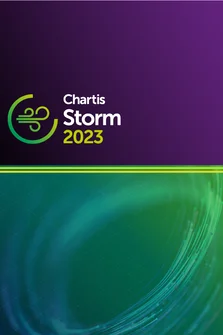<p>For many years, banks have considered pursuing a greater alignment and integration of their risk and finance functions, often encouraged by regulators, consultants, and shareholders. However, projects to reach this goal inevitably fell short and were abandoned because of a lack of commitment or substantial barriers that made the benefits not worth the cost.<br />
The financial crisis has changed the way that banks look at risk and finance integration, and these projects have once again been prioritized. However, the path to successful risk and finance integration is not at all simple. If it were, firms would have already done it. Banks face a number of technology and organizational challenges and business model changes.<br />
To understand the problems that banks are facing, their aims for risk and finance integration, and their technology needs, SAP commissioned Chartis Research to carry out a survey of risk and finance professionals on this subject. The survey and analysis was carried out independently by Chartis Research.<br />
The results show that:<br />
• 88% of the 108 respondents said that risk and finance integration was a top priority or an important priority for them</p>
<p>• 67% intend to implement, or have already begun to implement, integrated risk and finance at an enterprise level</p>
<p>• Only 8% have not begun risk and finance integration projects</p>
<p>• Regulatory requirements, including Basel 3 and IFRS, and cost concerns are key drivers for firms to improve or implement risk and finance integration projects</p>
<p>• Over half of the respondents considered compliance with domestic and international regulations (such as Basel 3, EMIR, and IFRS) and business performance to be the two main shapers of approaches to integration</p>
<p>• Improved decision-making and capital allocation were the top two strategic goals to be achieved by integration projects. Stress testing and improved P&L forecasting are seen as key benefits resulting from these strategic goals</p>
<p>• Diverging priorities of risk and finance and the disconnect between the front and back office are the most significant organizational barriers to aligning the risk and finance teams</p>
<p>• Data quality, data volume, and siloed data are the most significant technology barriers to the success of on-demand risk and finance analysis. The survey shows that improving data quality and reconciliation is the number one technology goal for banks implementing risk and finance integration</p>
<p>• The technologies seen as having the greatest value are unified and open data models</p>
<p>• In follow-up interviews (see below), respondents suggested that they thought that new technology systems would not remain cutting edge for long and would need to be replaced fairly soon after implementation, demonstrating the need for solutions that can evolve with the bank, rather than point solutions</p>
<p>• For 62% of respondents, funding for risk and finance integration projects comes from change or special programs budgets, which show that budgets are being set aside for integration projects and that banks recognize the need for change programs.</p>
<p>To supplement the quantitative results of this global survey of 108 practitioners and to learn about banks’ approaches to risk and finance in greater detail, Chartis also carried out 25 in-depth phone interviews and face-to-face meetings with senior figures from banks and consulting firms. This report covers the results of Chartis’s survey in more detail and uses the results and interviews to explore the best methods for firms to implement risk and finance integration.</p>
Only users who have a paid subscription or are part of a corporate subscription are able to print or copy content.
To access these options, along with all other subscription benefits, please contact info@risk.net or view our subscription options here: http://subscriptions.risk.net/subscribe
You are currently unable to print this content. Please contact info@chartis-research.com to find out more.
You are currently unable to copy this content. Please contact info@chartis-research.com to find out more.
Copyright Infopro Digital Limited. All rights reserved.
As outlined in our terms and conditions, https://www.infopro-digital.com/terms-and-conditions/subscriptions/ (point 2.4), printing is limited to a single copy.
If you would like to purchase additional rights please email info@chartis-research.com
Copyright Infopro Digital Limited. All rights reserved.
You may share this content using our article tools. As outlined in our terms and conditions, https://www.infopro-digital.com/terms-and-conditions/subscriptions/ (clause 2.4), an Authorised User may only make one copy of the materials for their own personal use. You must also comply with the restrictions in clause 2.5.
If you would like to purchase additional rights please email info@chartis-research.com


